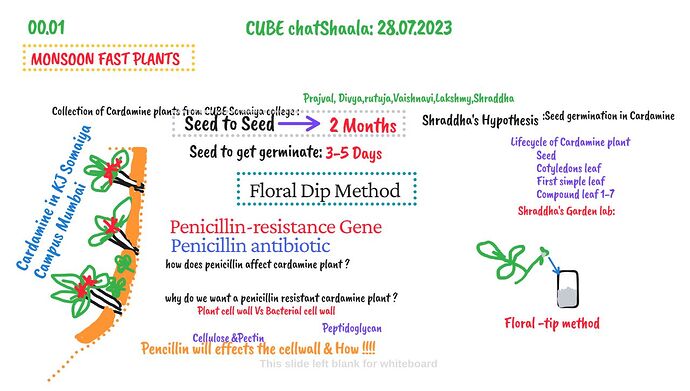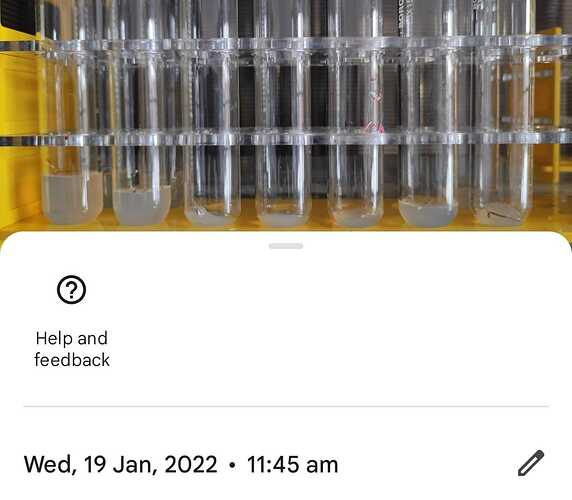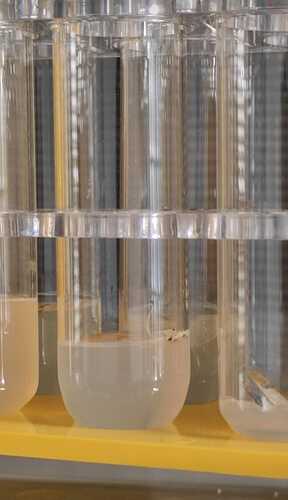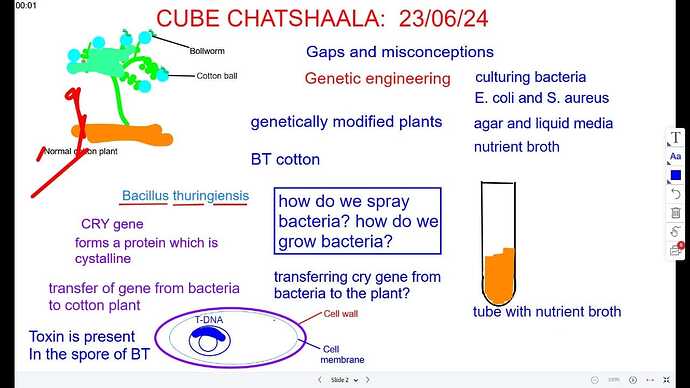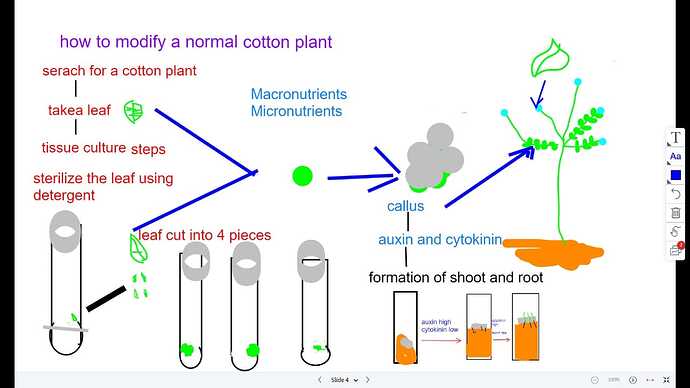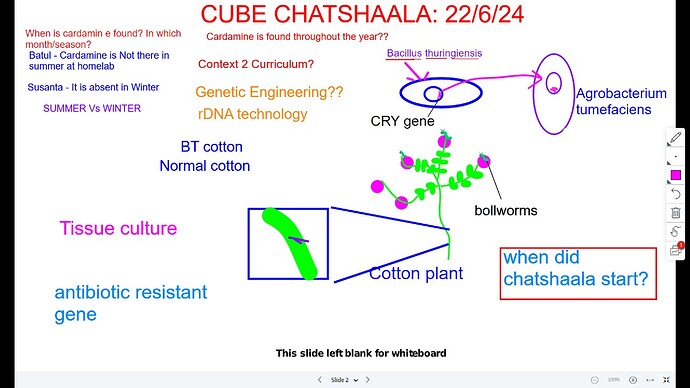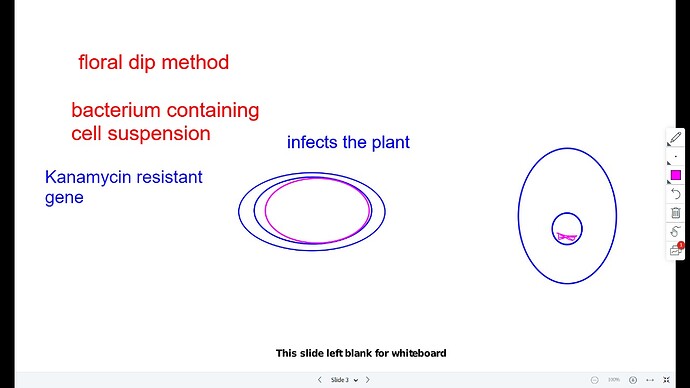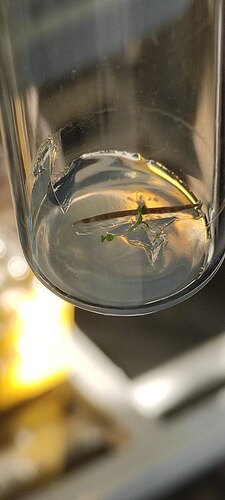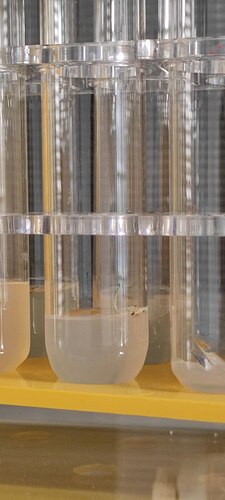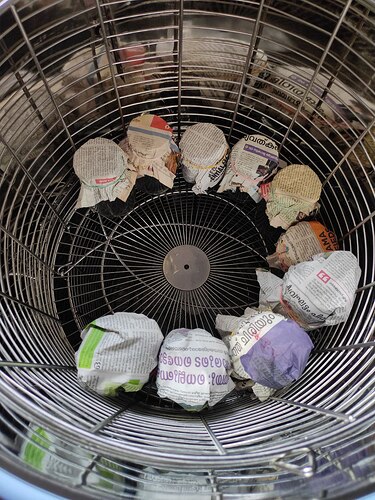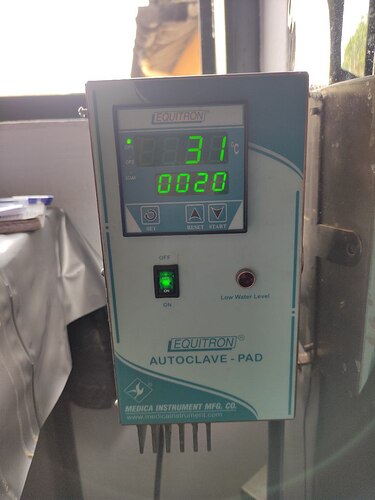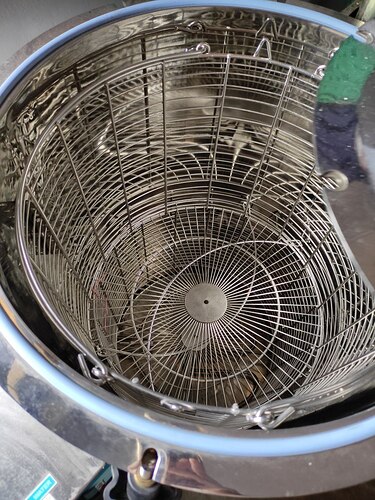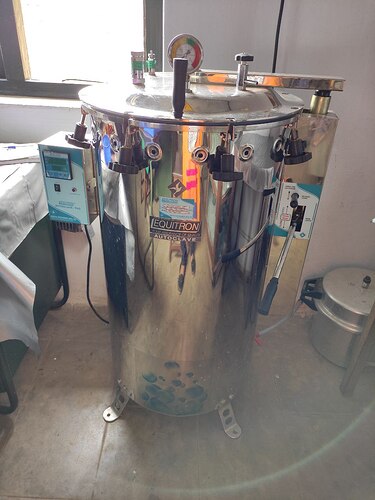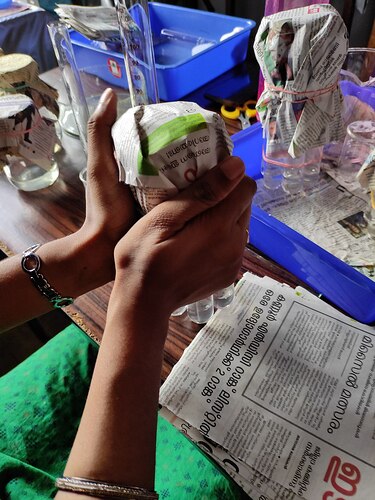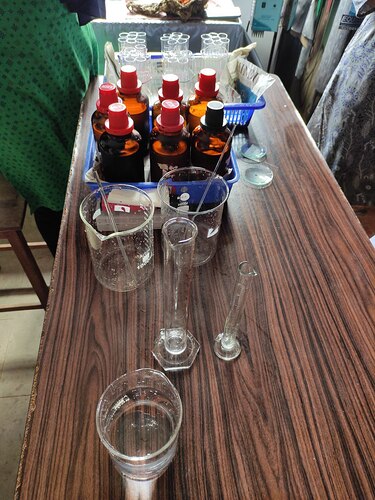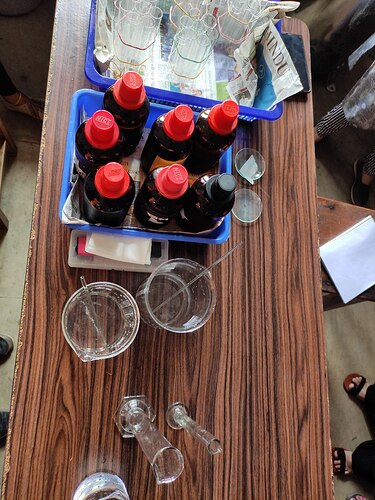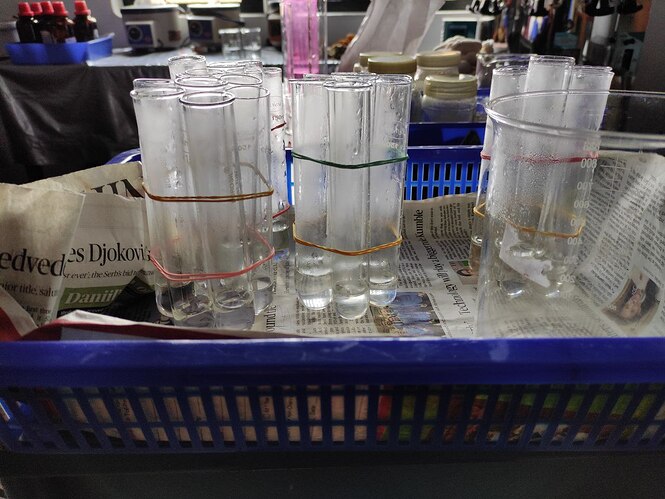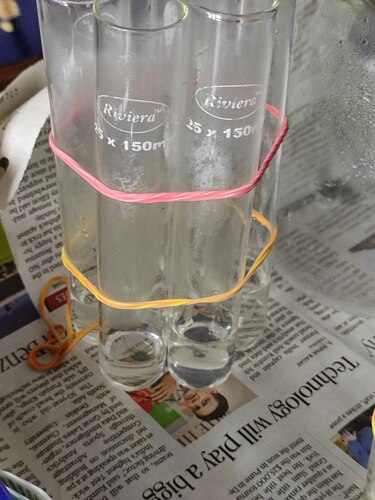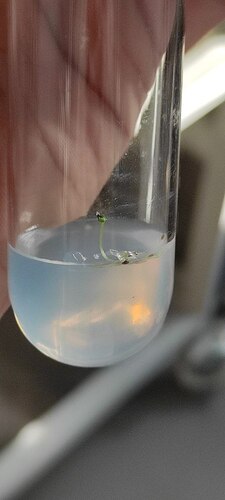Photo by @Shraddha276
Why do we want to make transgenic Cardamine plant !?
Particularly An antibiotic resistant plant !?
How the mechanism of transgenic plant in plant tissue culture different from Floral dip method !!
Highlighted question during chatshaala,and still Cubists need Clarity in that !!!
These questions that also there in my mind when Chatshaala discussion end on 28/07/2023.
I became a part of CUBE in 2020 during the final year of my BSc Botany program.
During the First Online National Meet, I had the opportunity to witness my friend Arunima’s presentation on Cardamine.
Interestingly, it was the first time I encountered the term “plant model organism Arabidopsis” and I came to know about Cardamine ,an alternative of Arabidopsis.
Subsequently, through discussions in CUBE, I learned that Cardamine serves as a viable alternative to Arabidopsis, and Cubists are actively involved in developing transgenic Cardamine plants.
I’m studying Plant Tissue Culture as part of my syllabus, and the aspect that influence me the most is the ability to generate an entire plant from a tissue sample or any part of a plant. In the application process of tissue culture we are learning the genetic engineering Aspects .
When the Cardamine presentation was introduced, I attempted to relate it to what I had learned, but I don’t got the whole story of Floral dip method that Cubists are doing .
However, I realize now is the time for me to understand the aspects that aren’t entirely clear to me.
These are the Doubts that I had regarding Floral dip method in Cardamine !!
I asked this in Personaly to @Rechel_tirkey ,here are our conversations !!
An audio from me
[10/08, 7.25am] Rechel Tirkey CUBE:
Yes, Theertha . We can make resistant for other antibiotics as well. But for that we will need bacteria which will contain penicillin resistant gene or any other gene of interest.
That’s the application of genetic engineering. We use this technique to introduce gene of interest to other organism. So we can do that.
So, In our case, we had Agrobacterium with kanamycin resistant gene. So after floral dip experiment we consider that kanamycin resistant gene has been transferred.
An audio from me :
[10/08, 1:53 pm] Rechel Tirkey CUBE: Okay , so the objective of this whole experiment was to study genetic engineering and to understand it’s mechanism.
There must be potential use or application of making plant and animal antibiotic resistant. But here , By introducing Kanamycin resistant gene we are not exactly fulfilling any commercial or industrial purpose.
Let’s think in this way, by introducing kanamycin gene into Cardamine plant we are making it resistant for particular chemical i e kanamycin.
So, we can introduce such other useful gene by using the floral dip method.
For example- if I want to make a plant, draught resistant. I’ll transfer draught resistant gene into bacterial plasmid then perform floral dip method.
And I will expect that if floral dip method worked for kanamycin resistant gene then it will work for draught resistant gene as well.
[10/08, 1:54 pm] Rechel Tirkey CUBE: Hope, this explanation is helpful to you.
That was a very well explanation by @Rechel_tirkey ,Thank you ![]()
Back to My Understanding
Making Transgenic plants through Plant tissue culture
Plant material (embryo) in water with a few drops of detergent.
Explants (embryo) rinsed in deionised water.
Surface disinfect in 70% EtOH for 30 sec.
Explants (embryo) rinsed in deionised water.
I had tried a small attempt to germinate cardamine plants in Tissue culture Lab,Providence Women’s College ,Kozhikode.19/1/2022
But unfortunately i am not continued that ,Two seeds were germinated .
Coming back to our Topic;
After Isolating immature embryo transferring genes into plant cells by the Agrobacterium method (Agrobacterium tumefaciens carrying the gene of interest (resistance to the antibiotic Kanamycin)introduced to embryo)
Collecting transformed Embryo using Selectable marker
The seeds that grown in a medium that contains the antibiotic that will kill all untransformed tissues or cells. Therefore, only seeds whose cells have been transformed with the transgene construct survive in the presence of the antibiotic. The surviving tissue is removed from the antibiotic and allowed to regenerate into whole plants.
Why agrobacterium came in picture !!!
We are exploiting a natural phenomenon in Plant -Microbe interaction in Plant genetic engineering !?
Agrobacterium is a bacteria which cause crown gall diseases in Plants .How!!
1)Wounded plant cells exude general antimicrobial agents, such as the phenolic acetosyringone, which has no toxic effect
on Agrobacterium.
2)The T-DNA is excised and bound to VirD2(part of bacteria) protein.
3)The VirB protein forms a connection between Agrobacterium and the plant cell and facilitates T-DNA transfer into the plant.
4)The T-DNA is inserted into the plant cell’s genome.
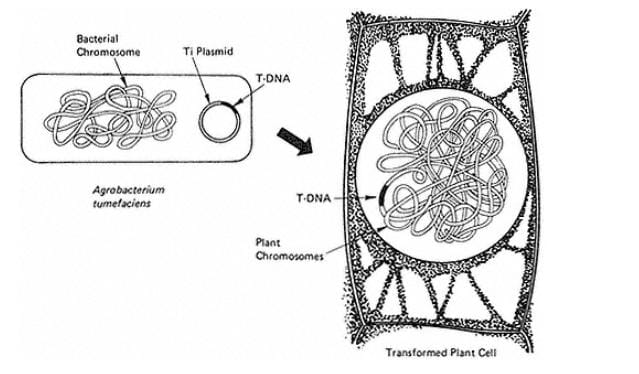
In plant genetic engineering, the Ti plasmid can be used to carry foreign genes into plant cells. The Ti plasmid is the disease-causing agent of the soil-borne bacteria Agrobacterium tumefaciens . When the bacteria infect a plant, a part of the Ti plasmid called the T DNA is transferred to a plant chromosome. When the T DNA is expressed as part of that chromosome, it causes the plant cell to divide and grow abnormally. Researchers have recently developed procedures for removing the tumor-causing genes from the T DNA and replacing them with desirable genes. The Ti plasmid containing the altered T DNA region can then be used to insert the desired genes into plant chromosomes.
Floral Dip method
Making kanamycin resistant Cardamine plants by Floral dip method
1)Seeds are Germinating and select the plant with floral bud
Floral bud of Cardamine dip in Agrobacterium tumefaciens solution contain kanamycin resistant gene .
Agrobacterium contain kanamycin resistant gene may incorporated to plant genome.
In this process, we just use detergent to loosen up the cell As the cell membranes are loosened up the desired gene will incorporated to genome of plant .
Selection of transformed seeds
2)Germinating seeds in Kanamycin solution
Those seeds which will germinate in Kanamycin solution will consider as transformed seeds and rests are non-transformed seeds.
In this process, we just use detergent to loosen up the cell As the cell membranes are loosened up the desired gene will incorporated to genome of plant .Please do comment @Rechel_tirkey @KiranKalakotiR @Shraddha276 @Arunan @Chitralekha &others

